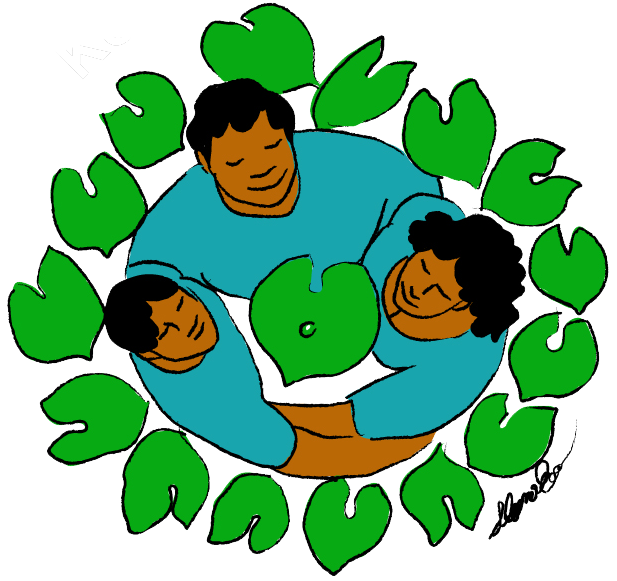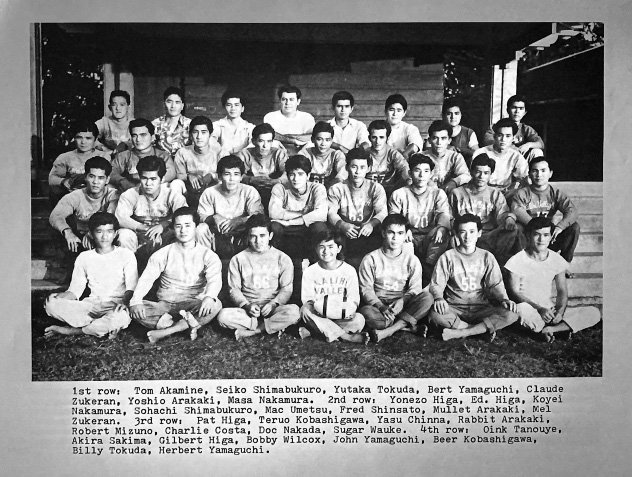Voices From the Past: Our Valley, Our Furusato
Sports have been connecting Kalihi youth and their families for generations. The following excerpt was taken from KKVʻs archive and recounts a history of Kalihi that only a few can recall. This is the second part in a multi part series. Some portions of this content have been edited for continuity.
KALIHI VALLEY 1940
Formation of the Football Team:
About 1938, a few of the boys joined the Kalihi-Waena barefoot football team called the Kalihi Babes. But after two seasons, the team was disbanded because sponsors were lacking. Some of the boys then joined a newly organized team at Fern Park. Unfortunately, this team too folded after two years.
After some discussion the Kalihi Mauka boys decided in 1942 to form their own team. Since the nuclei of the disbanded teams were made up of Kam IV youths, the feeling was that a highly competitive team could be organized. In order to raise money to purchase equipment and first-aid kits, kalua pig, lau and Japanese movie tickets were sold. Even a bon dance was held at the old Kam field. With no experience in fund raising, the team and their supporters plunged into these activities with gusto. The thought of failing to raise money never entered their minds. They were successful because of the concerted effort of all the boys and especially the girls. These projects were carried out in spite of their youth; the character traits of teamwork and all-out effort were manifested on the athletic field as well.
Champs:
In 1942, the first year Kalihi Valley joined the City Wide 130 Pound Barefoot League, they captured the West Division Championship, only to lose to the perennial champs, the Diamond Packers, in the game for City Championship. The second year the team finished as runner-up in the West Division.
In their third year, in 1944, the determined Kalihi Valley team captured the 130 Pound Barefoot Football Championship. Then for four successive years, the boys continued to capture the championship. This string of five consecutive championships became a record never to be broken. The Kalihi Valley team played forty-five consecutive games without a defeat during this five-year championship period. So awesome was the team that one season, Kalihi Valley scored more than a hundred points while yielding only six points to their opponents—truly a powerful and devastating performance.
Home-and-Home Series with Kauai:
The Kalihi Valley team also participated in three home-and-home series with Kauai football teams. The Kauai teams came to Honolulu to challenge Kalihi Valley and Kalihi Valley went to Kauai to play them. Since there were no funds for the series, the host team was responsible for providing accommodations for the visiting team. When the Kauai team came to Kalihi Valley, each Kalihi Valley team member was assigned two Kauai players to house and feed for the duration of their visit, which was about three days. When the Kalihi Valley boys went to Kauai, the Kauai team reciprocated. The experience of living together in each other's home resulted in a warm and intimate friendship, although the boys were fierce rivals on the playing field.
The first trip to Kauai was by inter-island steamer under blackout conditions due to the war. After the overnight trip, the team had to wait outside Nawiliwili Harbor for a couple of hours until dawn broke. During the long wait, the boat rocked violently causing many of the boys to become seasick. (Later, many experienced the same agony when they sailed overseas to serve in the war.)
When the Kauai boys came to Kalihi Valley, every effort was made to make their trip memorable. To entertain the Kauai boys at night, everyone met at the famous, perhaps infamous, Kam IV bridge to “talk stories” or roll dice. Some went downtown to share the city life with the Kauai boys.
KKV’s Accomplishments
Starting in 1971







